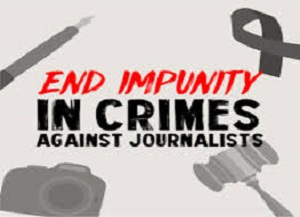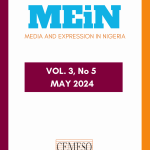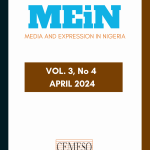Published October 29, 2019
Somalia is the world’s worst country for the fifth year in a row when it comes to prosecuting murderers of journalists, CPJ’s 2019 Global Impunity Index found. War and political instability have fostered a deadly cycle of violence and impunity, along with inaction by states worldwide.
The 13 countries that make up the list of the world’s worst impunity offenders represent a mix of conflict-ridden regions and more stable countries where criminal groups, politicians, government officials, and other powerful actors resort to violence to silence critical and investigative reporting. Unchecked corruption, ineffective institutions, and lack of political will to pursue robust investigations are all factors behind impunity, CPJ has found.
The Philippines has been among the worst five countries nearly every year since the index was first published in 2008. The country’s fifth-worst ranking is due in part to the deadly ambush of 58 individuals, including 32 journalists and media workers, in Ampatuan, Maguindanao, on November 23, 2009. The trial of over 100 suspects behind the massacre is due to conclude this year, but as of August 31, 2019—the final date CPJ counted convictions for this year’s index—no verdict had been announced. Ampatuan clan patriarch and former Maguindanao governor Andal Ampatuan Sr., whom prosecutors said was the mastermind behind the attack, died in detention in July 2015, reports said.
In the past decade, armed militant groups such as Al-Shabaab, Boko Haram and the Islamic State group have most often targeted journalists with complete impunity. However, criminal groups have become a major threat, killing large numbers of journalists and routinely escaping justice. Mexico, to date this year’s deadliest country for journalists, has seen its impunity rating worsen nearly every year since 2008, as criminal cartels waged a campaign of terror against the media. Of at least 31 murders of journalists that took place in Mexico during the index period, authorities have secured only one conviction.
Getting Away with Murder
During the 10-year index period ending August 31, 2019, 318 journalists were murdered for their work worldwide and in 86% of those cases no perpetrators have been successfully prosecuted. Last year, CPJ recorded complete impunity in 85% of cases. Historically, this number has been closer to 90%; the past two years reflect a small improvement.The 13 countries on the index account for more than three quarters (222) of the global total of unsolved murders of journalists for the index period. All 13 have featured multiple times since CPJ first compiled the index in 2008, and seven have appeared every year.
While these countries show the most entrenched patterns of violence and impunity, it has become clear over time that even one murder of a journalist can have a chilling effect and that when the perpetrators escape justice, the intimidation is amplified. When Washington Post columnist Jamal Khashoggi was ambushed and murdered in the Saudi Arabia consulate in Istanbul, Turkey, in October 2018, critics of Saudi Arabia worldwide received the message that there is no safe harbor.
In recent years, unchecked anti-press violence has spread to places previously considered relatively safe for the media. The October 2017 car bombing that killed blogger Daphne Caruana Galizia in Malta, followed by the murder of Slovakian journalist Ján Kuciak in February 2018, put journalists in the EU on notice that covering crime and corruption can be deadly. Slovakia indicted four people, including the suspected mastermind, earlier this month. However, authorities there and in Malta have failed to achieve convictions in either case.
Colombia is the only country to fall off the index since last year. In December, President Iván Duque announced that the leader of a drug trafficking group accused of murdering two journalists and their driver was killed in a joint police and military operation near the border with Ecuador.
Infographic
This interactive chart lists countries with the worst records in prosecuting those who murder journalists in direct retaliation for their work. The countries are ranked by their 2019 impunity rating, from highest to lowest.
Sort by:
|
1
|
|
| Unsolved Killings | 25 |
| Population | 15.0 m |
| Change | Improved |
| Years on Index | 12 |
|
2
|
|
| Unsolved Killings | 22 |
| Population | 16.9 m |
| Change | Worsened |
| Years on Index | 6 |
|
3
|
|
| Unsolved Killings | 22 |
| Population | 38.4 m |
| Change | Improved |
| Years on Index | 12 |
|
4
|
|
| Unsolved Killings | 5 |
| Population | 11.0 m |
| Change | Worsened |
| Years on Index | 5 |
|
5
|
|
| Unsolved Killings | 41 |
| Population | 106.7 m |
| Change | Worsened |
| Years on Index | 12 |
|
6
|
|
| Unsolved Killings | 11 |
| Population | 37.2 m |
| Change | Improved |
| Years on Index | 11 |
|
7
|
|
| Unsolved Killings | 30 |
| Population | 126.2 m |
| Change | Worsened |
| Years on Index | 12 |
|
8
|
|
| Unsolved Killings | 16 |
| Population | 212.2 m |
| Change | Improved |
| Years on Index | 12 |
|
9
|
|
| Unsolved Killings | 15 |
| Population | 209.5 m |
| Change | Improved |
| Years on Index | 10 |
|
10
|
|
| Unsolved Killings | 7 |
| Population | 161.4 m |
| Change | No change |
| Years on Index | 9 |
|
11
|
|
| Unsolved Killings | 6 |
| Population | 144.5 m |
| Change | Improved |
| Years on Index | 12 |
|
12
|
|
| Unsolved Killings | 5 |
| Population | 195.9 m |
| Change | Improved |
| Years on Index | 7 |
|
13
|
|
| Unsolved Killings | 17 |
| Population | 1352.6 m |
| Change | No change |
| Years on Index | 12 |
Population in millions from the World Bank, 2019. Change refers to rating not ranking.
Source: CPJ data on journalists murdered with complete impunity, September 1, 2009-August 31, 2019
Methodology
CPJ’s Impunity Index calculates the number of unsolved journalist murders as a percentage of each country’s population. For this index, CPJ examined journalist murders that occurred between September 1, 2009, and August 31, 2019, and remain unsolved. Only those nations with five or more unsolved cases are included on the index. CPJ defines murder as a deliberate killing of a specific journalist in retaliation for the victim’s work. This index does not include cases of journalists killed in combat or while on dangerous assignments, such as coverage of protests that turn violent. Cases are considered unsolved when no convictions have been obtained, even if suspects have been identified and are in custody. Cases in which some but not all suspects have been convicted are classified as partial impunity. Cases in which the suspected perpetrators were killed during apprehension are also categorized as partial impunity. The index only tallies murders that have been carried out with complete impunity. It does not include those where partial justice has been achieved. Population data from the World Bank’s 2018 World Development Indicators, viewed in September 2019, were used in calculating each country’s rating.
















